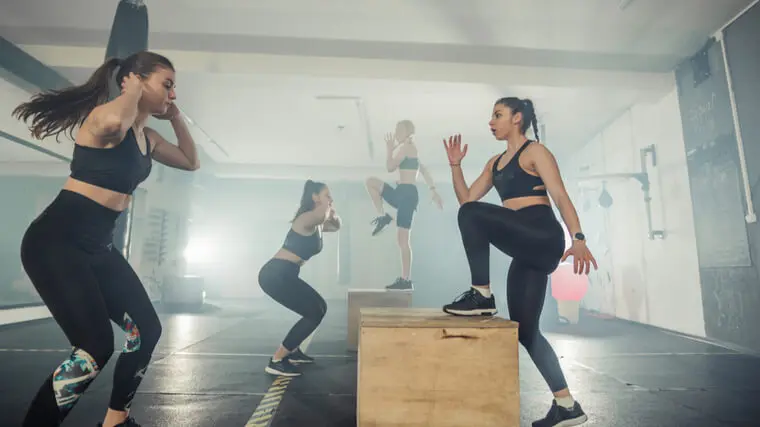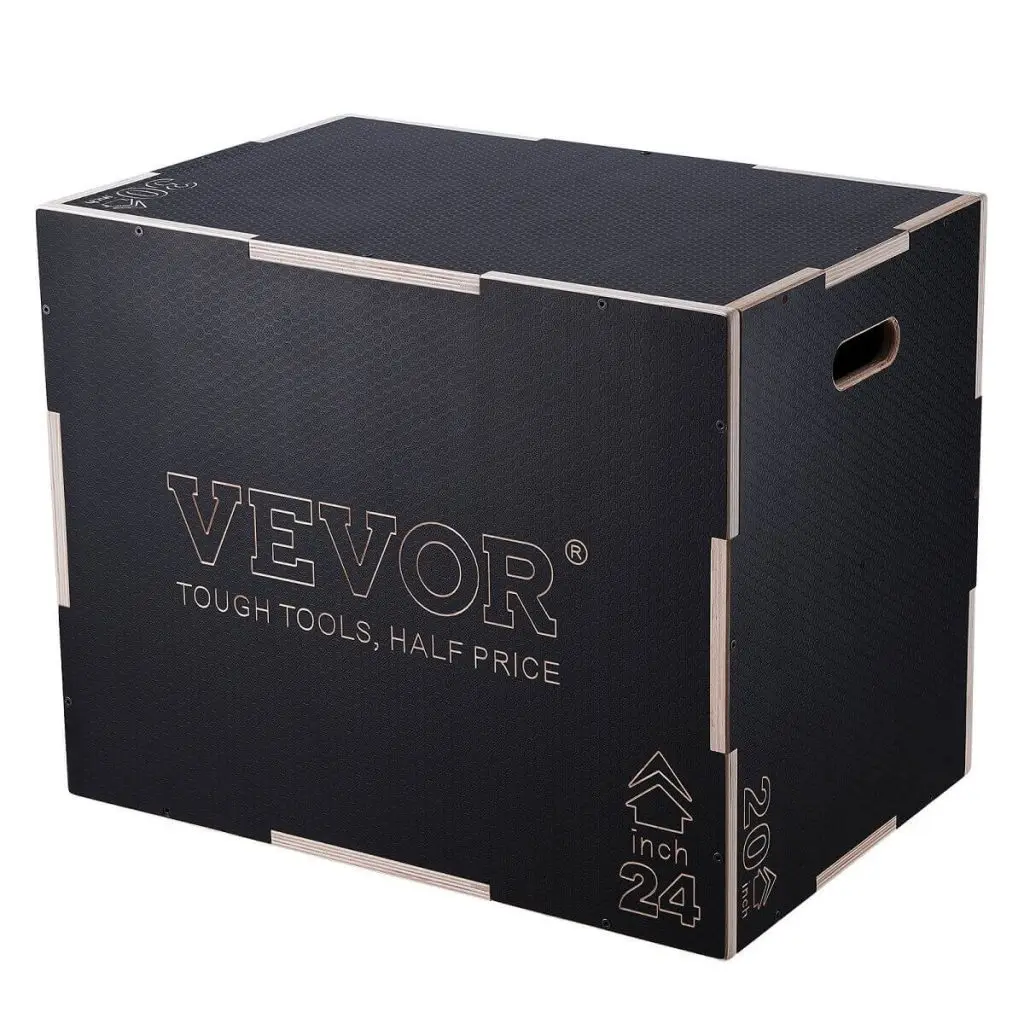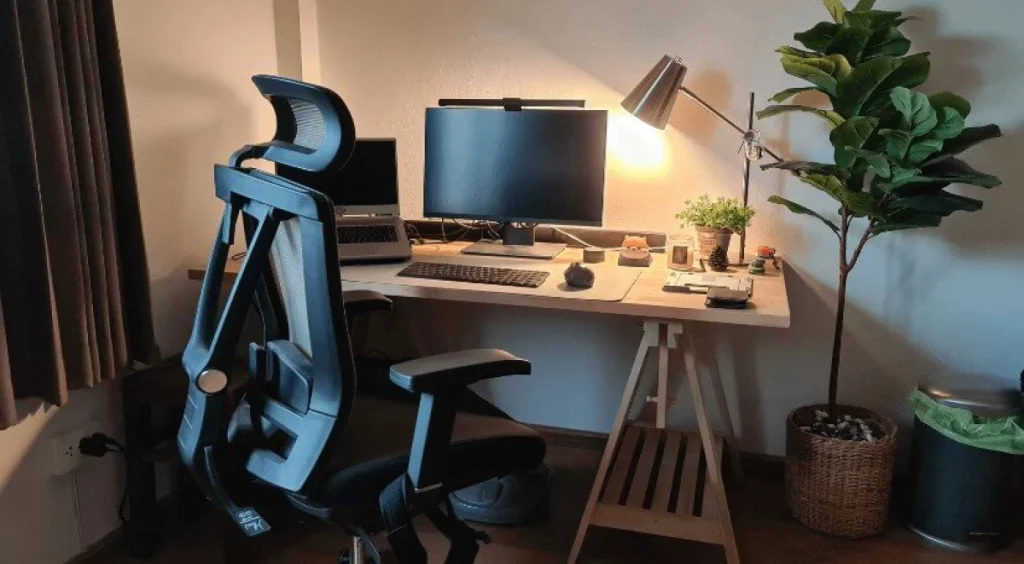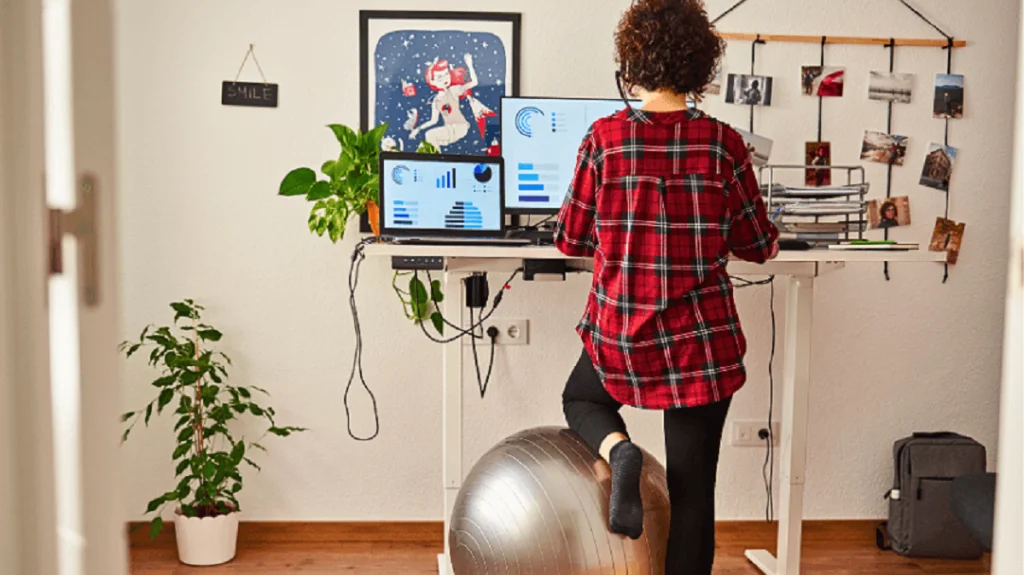Box jumps fall into the class of plyometric fitness training exercises (or simply, jumping exercises). If you’re versed in high-intensity training at home or the gym, this exercise will most likely be one of your current or previous plyometric workout routines.
Box jumps are excellent for building power and firing your central nervous system. They’re great for building explosive muscular power, endurance, and cardiovascular fitness. Gym experts recommend them as top exercises to build lower-body muscles and overall health. They’re also great for improving other components of your fitness like balance, mobility, stability, speed, and agility.
Meanwhile, we recommend the VEVOR plyo jump boxes for your fitness routines. VEVOR plyo jump boxes have special and durable designs to aid your speed and power during workouts. Getting a VEVOR plyo jump box can make the ultimate addition to your routine strength-building programs and great plyometric workouts.
Table of contents
- Getting Started with Box Jump Exercises
- Basic Box Jump Exercises for Beginners
- Intermediate Box Jump Workouts
- Advanced Plyo Box Workouts
- Incorporating Box Jump Exercises into Your Routine
- Why Choose VEVOR Plyo Jump Box?
- Frequently Asked Questions (FAQs) on Plyo Workout Jump Boxes
- Final Thoughts on Box Jump Exercises and VEVOR Plyo Jump Box
Getting Started with Box Jump Exercises
How do I get started with box jump exercises from my home or gym? Here’s a helpful section on safety precautions and tips on selecting the perfect plyo box size for your routines.
What You Need to Know Before You Start
Box jump exercises are what they read, as “jump” exercises. They involve jumping on and off a raised surface. However, it’s worth noting that both jumping onto a raised surface and off it are crucial events that potentially place lots of stress on your joints. You want to exercise enough caution to avoid potential injuries from such “depth jumps.”
Even individuals who have done lots of plyometric training and feel comfortable with jumping off raised surfaces (“depth jumps”) still need to exercise caution when stepping off the box. Another crucial safety requirement involves landing on the right foot or knee. Avoid landing with one foot or knee before the other.
You also want to avoid doing box jumps at the end of a workout since you need fresh legs for the most effective workout sessions that help you to improve maximally. Meanwhile, you also need to select the right plyo box size.
The key to choosing the right plyo box size is starting with a low box between 12 and 24 inches tall, depending on your strength and confidence level. Choose a box that won’t slide around or be inclined to fall over if you kick it. Better still, get a commercially available ply box from VEVOR for a seamless experience.
Warm-Up and Preparation
Begin with a light-intensity exercise like walking in place for three minutes. Boost the intensity of your walk towards the final minute. You could lift either the knees higher when walking or end the warm-up with jumping jacks.
You could also get your muscles ready for the workout by exploring a few strength training movements. Consider choosing three of the following muscle activation movements, doing one set of up to 15 reps each:
- Squat plyo box exercises
- Glute bridge box exercises
- Single leg box jump
- Basic lunge
- Lateral lunge workouts with box jumps
Your body gets warmed up after these exercises and is ready for your plyo jump exercises.
Basic Box Jump Exercises for Beginners
Basic box jump exercises have the least requirement in terms of physical fitness and exercise experience. Two common box jump exercises for beginners include step-up jumps and box squat jumps.

Step-Up Jump
A step-up jump requires two basic steps. Here you go:
- Stand in front of your VEVOR plyo box, secure box, or bench at an appropriate height for your ability. The higher the box, the further away you need to stand.
- Dip down into a quarter-squat position, before quickly exploding your hip and legs upward while swinging your arms in the air to propel yourself onto the box’s top. Land gently on the box to arrive at a standing position. Gently step off the box back into the starting position.
Box Squat Jump
Box squat jumps are another common category of basic plyo box exercises. Jumping step-ups help to improve the quadriceps, glutes, hamstrings, and calves. Other muscles this boxing workout engages include the core muscles as well as stabilizer muscles in the feet and ankles.
Follow these steps to complete a box squat jump:
- Stand up straight with a box ahead of you. Place one foot onto the box.
- Using your arms to create upward momentum, jump high rapidly, switching the foot ahead with the one on the ground.
- Land with both feet simultaneously.
- Immediately revert to the starting position in the same fashion, spending as little time in contact with the ground as you can.
Intermediate Box Jump Workouts
Intermediate box jump workouts fall in between simple box jump workouts and advanced jump workouts based on the required exercise experience and physical fitness level. Two common intermediate box jump workouts include lateral box jumps and depth jumps. Here’s how to complete them to boost your exercise routines.
Lateral Box Jump
Lateral box jumps belong to an intermediate class of box jump workouts. Besides being relatively straightforward to master, they help you build balance and agility. Here’s how to complete a lateral box jump.
- Stand placing your feet hip-width apart.
- Take a big step out to the left. Bend your left knee, hinge forward at the hips, and sit your butt back to lower into a lateral lunge. Keep your chest lifted and core engaged.
- Push through your left heel to return to standing, but instead of placing it back on the ground, immediately bring your knee toward your chest and hop up toward the ceiling.
- Land on your right foot with a soft knee and immediately move into the next rep.
The lateral movement here has you working in the frontal plane of motion, which better mimics everyday motion where we move in all kinds of directions—not just forward and backward. You’ll work your quads and glutes in this move too.
Depth Jumps
Depth jumps are plyometrics exercises that primarily help to build the quads while targeting the calves, glutes, and hamstrings. You may need only a flat raised surface like a VEVOR plyo jump box or no equipment, depending on your jump variation to complete a depth jump.
Moreover, depth jumps help you increase your explosive power. Here’s how to complete depth jump workouts.
- Stand on a raised platform with your toes on the edge.
- Step off the platform, landing on the balls of both feet simultaneously.
- Once you touch the ground, tighten your leg muscles, jumping as high as possible off the ground.
- The first three steps make one rep. Repeat the cycle on several occasions as your routine permits.
Advanced Plyo Box Workouts
As with most workouts, there are simple routines and advanced alternatives for individuals who don’t mind going the extra mile. Let’s see some helpful advanced plyo box workouts to try as a “pro box jump-er”
Single-Leg Box Jump
A single-leg box jump is an advanced ply box exercise to build balance and strength. Follow these steps to complete a single-leg box deadlift jump to jump stand with the feet together:
- Shift your weight to your left leg. While maintaining a slight bend in your left knee, hinge at your hips and tip your torso forward. Extend your right leg behind you with your knee bent and toes pointing down toward the floor.
- Keep your back flat and core engaged as you reach the floor with your right hand. Ensure that your torso is practically parallel to the floor at the bottom of the movement.
- Maintaining a tight core, push through your left heel to jump as high as possible. Swing your right arm behind you slightly bending your elbow; swing your left in front with your elbow slightly bent.
- Land gently for the first round, then immediately lower your torso into a deadlift to begin the next rep.
- Are all reps on the same side? Repeat on the other side following the above steps.
Box Jump Burpees
Burpees are total-body plyometric moves that help to work multiple body muscles, including your shoulders, chest, core, glutes, and legs. Interestingly, box jump burpees also come in various intensity levels. They help you build your strength while also improving your cardiovascular health. Follow these steps to do a box jump burpees:
- Stand placing your feet shoulder-width apart with your arms by your sides
- Squat and reach forward by placing hands on the floor, shoulder-width apart
- Jump your legs straight out behind you onto a high plank while stacking your hands beneath your shoulders
- Lower your body to the floor, briefly raising your palm for a second before returning them to the ground and push yourself up to a high plank.
- Jump your feet towards your hands, springing up as high as you can, reaching your arms overhead.
- Land softly on your feet for 1 cycle. Drop down instantly onto your next jump cycle.
Recommended For Your Project
Incorporating Box Jump Exercises into Your Routine
Learning about box jump exercises is commendable. However, the bucks come to the person who creates some workout plan to carry out the exercise. Here’s how to create a balanced workout plan for your routines.
Creating a Balanced Workout Plan
We recommend doing at least 10-15 jumping steps daily to get the most benefit. Beginners can begin with fewer reps and increase the reps gradually as their experience and fitness level increase. You could incorporate box jumps into your plyometrics workout plan in different ways.
For instance, you could begin with basic box jumps like step-ups and box squats. However, you want to start them before the strength portion of your workout. That way, you’ll be fresh enough to practice these exercises at peak performance levels.
Why Choose VEVOR Plyo Jump Box?
VEVOR plyo jump boxes offer a blend of quality, durability, and affordability in every piece. We explore the unique features and benefits of a VEVOR plyo jump box in the following paragraphs.

Multiple Sizes
VEVOR jump boxes have multiple sizes allowing you to execute enhanced training sessions at varying heights. Vary your jumps by 12, 18, 24, or 30 inches in heights for a seamless and multidimensional exercise with plyo box. What’s more? The super-strong plyo jump box from VEVOR weighs 500 pounds so there’s no need to worry of replacing a broken box anytime soon.
Sturdy Material
Get a VEVOR plyo box for your upper body plyo exercises (or lower body plyometric exercises, as applicable) for sturdiness you can trust in a material, regardless of your current or future strength as your box exercises progress.
Each VEVOR plyo box comes with four rubber pads at the bottom and a textured silicone surface above it to provide grit and stability to ensure safe and effective moments when you exercise jumping on the box. It also boasts a visually appealing powder finish over the steel tubing surface to withstand corrosion.
A Comprehensive Exercise Tool
Lastly, the VEVOR plyometric box aptly suits any of your personalized training needs, whether you want to improve your shoulders, buttocks, legs, or enhance your overall core stability.
How about checking a handful of customer reviews on VEVOR’s durable pyro box to make an excellent product choice for your workout with box jumps?
“Pretty Nice Product”
‘‘I bought these to help my daughter out with track & field and her high jump. Only thing that I would change would be to add weight to the base. Other than that pretty nice product.’’
“Amazing Quality…”
‘‘Amazing quality, excellent purchase, great value.’’
“Sturdy”
‘‘Wish it was a little taller but overall sturdy and was easy to put together.’’
“Absolutely Perfect”
‘‘I was worried about the sturdiness and stability, but that was quickly brushed off. My Vevor Box is absolutely perfect. It’s sturdy, well constructed, beautiful and I know it will last forever.’’
Frequently Asked Questions (FAQs) on Plyo Workout Jump Boxes
Box jump exercises are some of the most amazing routines to build lower-body muscles and instill speed and agility in your entire body. Here’s answering some common questions on getting the best plyo workouts.
What Safety Precautions are Necessary When Doing a Workout with Box Jumps
Box Jumps are high-impact exercises, so you want to ensure that you have several months of weight training/experience before beginning any plyometric exercise routine.
When Do I Practice Plyo Exercises During my Routine?
The timing of your box jump workout on your plyometric workout routine is crucial. If you’re already engaged in weight training, it’s best to practice great plyometric exercises during the power phase. Doing so decreases injury risks while helping you to maximize their benefits.
How Frequently Should I Practice Exercises with Plyo Boxes?
Beginners should practice box exercises once every week for safety reasons. Established individuals could create a plyometric workout plan that allows them to practice two to three sessions every week.
Final Thoughts on Box Jump Exercises and VEVOR Plyo Jump Box
Box jump exercises are excellent workouts to build your lower-body muscles while improving your overall health. Beginners can incorporate box jumps into regular workouts once every week. Meanwhile, experienced persons can incorporate these workout sessions more regularly with two to three sessions weekly.
However, a quality fitness kit isn’t complete until it includes a top-quality pyro box like those from VEVOR. Visit VEVOR today to explore high-quality box jump packs and take your box workout sessions to a classy and effective level.





